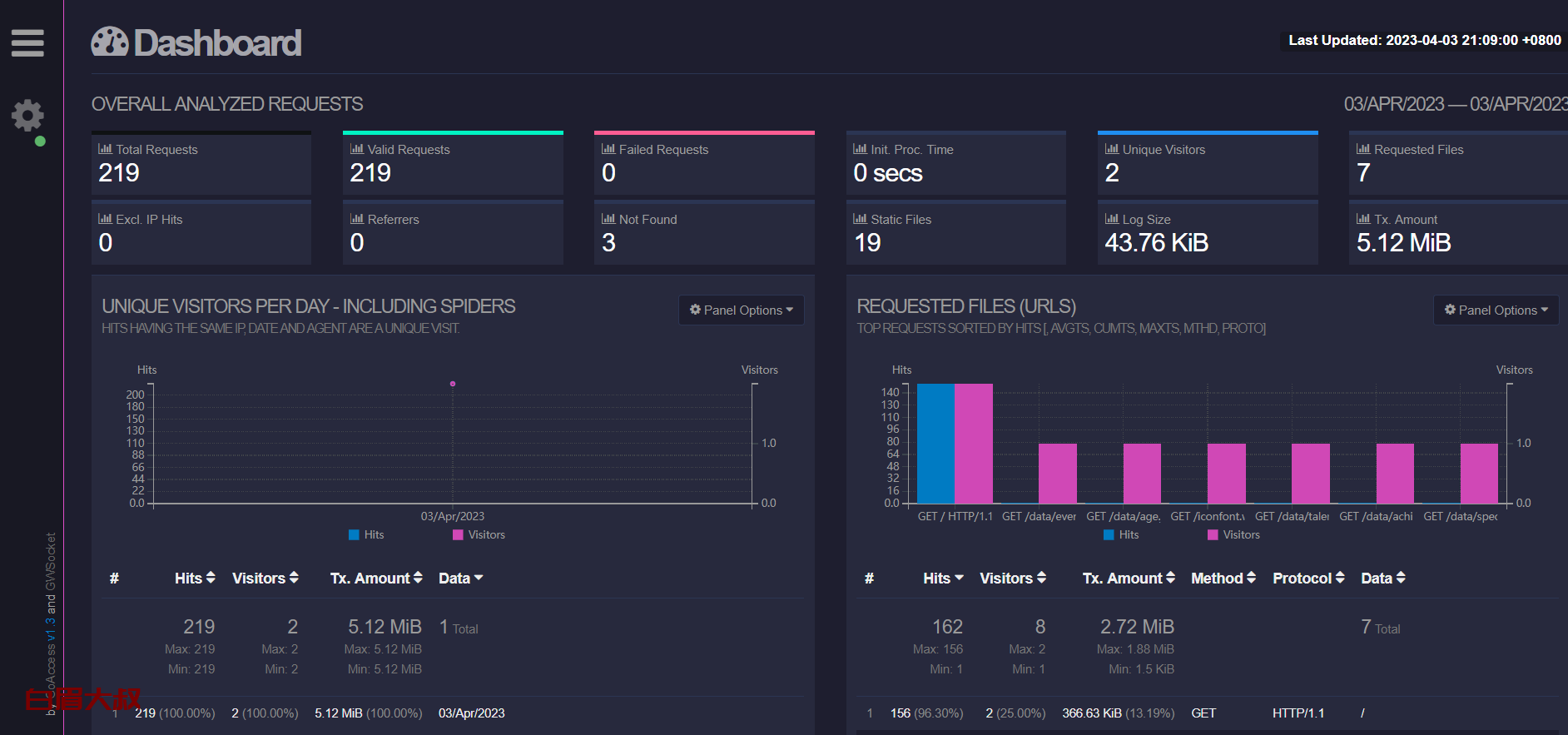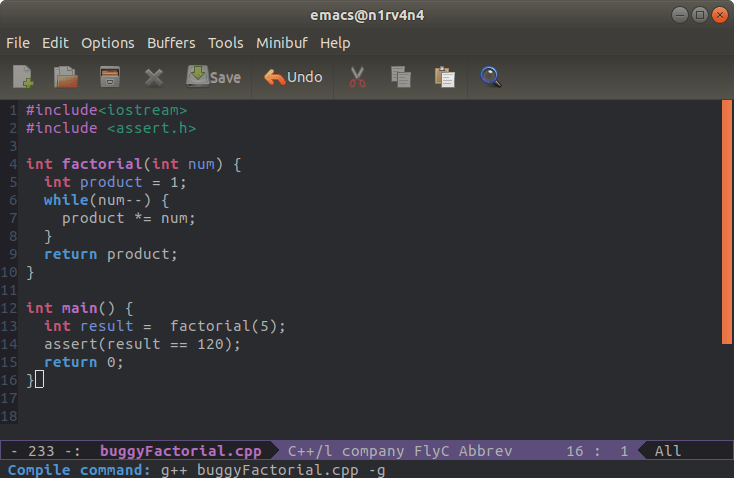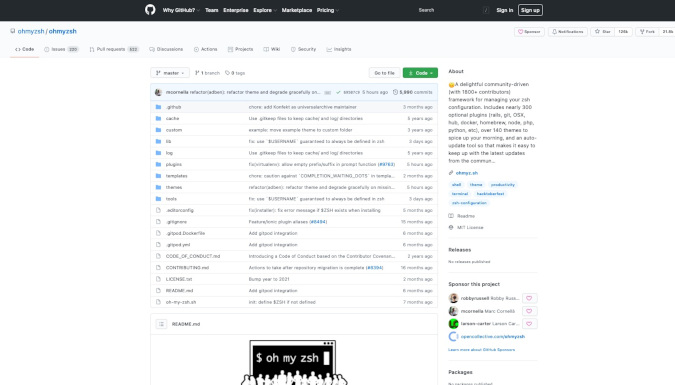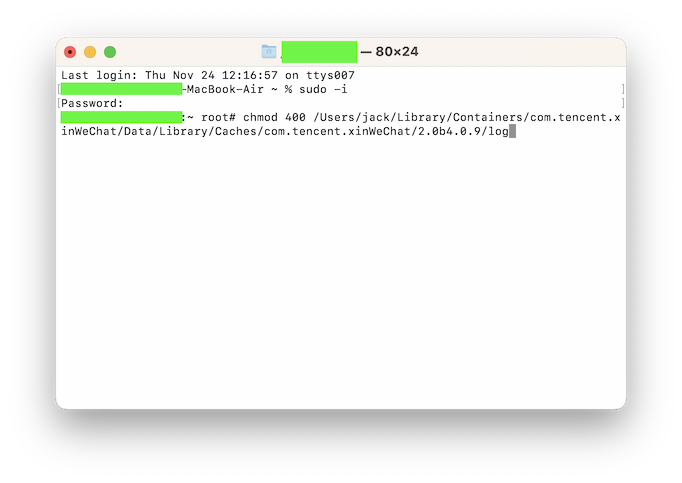Nginx-第一章 {#leanote-title}
{#tab-markdown}Markdown{#tab-html}HTML
01·Nginx Web快速入门-基础 {#title}
Nginx基础概述 {#title-1}
|----------------------------------------------------------| | nginx简述 |
Nginx是一个开源且高性能、可靠的Http Web服务、代理服务。
开源: 直接获取源代码
高性能: 支持海量并发
可靠: 服务稳定
|----------------| | 我们为什么选择Nginx服务 |
Nginx非常轻量
功能模块少(源代码仅保留http与核心模块代码,其余不够核心代码会作为插件来安装)
代码模块化 (易读,便于二次开发,对于开发人员非常友好)
互联网公司都选择Nginx
1.Nginx技术成熟,具备的功能是企业最常使用而且最需要的
2.适合当前主流架构趋势, 微服务、云架构、中间层
3.统一技术栈, 降低维护成本* ,* 降低技术更新成本。
Nginx采用Epool 网络模型,Apache 采用Select模型
Select: 当用户发起一次请求,select模型就会进行一次遍历扫描,从而导致性能低下。
Epool: 当用户发起请求,epool模型会直接进行处理,效率高效,并无连接限制。
处理大量的连接的读写,Apache所采用的select网络I/O模型非常低效。用一个比喻来解释Apache采用的select模型和Nginx采用的epoll模型进行之间的区别:
假设你在大学读书,住的宿舍楼有很多间房间,你的朋友要来找你。select版宿管大妈就会带着你的朋友挨个房间去找,直到找到你为止。而epoll版宿管大妈会先记下每位同学的房间号,你的朋友来时,只需告诉你的朋友你住在哪个房间即可,不用亲自带着你的朋友满大楼找人。如果来了10000个人,都要找自己住这栋楼的同学时,select版和epoll版宿管大妈,谁的效率更高,不言自明。同理,在高并发服务器中,轮询I/O是最耗时间的操作之 一,select和epoll的性能谁的性能更高,同样十分明了。
Nginx和Apache区别
Nginx
轻量级,采用 C 进行编写,同样的 web 服务,会占用更少的内存及资源
抗并发,nginx 以 epoll and kqueue 作为开发模型,处理请求是异步非阻塞的,负载能力比 apache 高很多,而 apache 则是阻塞型的。在高并发下 nginx 能保持低资源低消耗高性能 ,而 apache 在 PHP 处理慢或者前端压力很大的情况下,很容易出现进程数飙升,从而拒绝服务的现象。
nginx 处理静态文件好,静态处理性能比 apache 高三倍以上
nginx 的设计高度模块化,编写模块相对简单
nginx 配置简洁,正则配置让很多事情变得简单,而且改完配置能使用 -t 测试配置有没有问题,apache 配置复杂 ,重启的时候发现配置出错了,会很崩溃
nginx 作为负载均衡服务器,支持 7 层负载均衡
nginx 本身就是一个反向代理服务器,而且可以作为非常优秀的邮件代理服务器
启动特别容易, 并且几乎可以做到 7*24 不间断运行,即使运行数个月也不需要重新启动,还能够不间断服务的情况下进行软件版本的升级
社区活跃,各种高性能模块出品迅速
Apache
apache 的 rewrite 比 nginx 强大,在 rewrite 频繁的情况下,用 apache
apache 发展到现在,模块超多,基本想到的都可以找到
apache 更为成熟,少 bug ,nginx 的 bug 相对较多
apache 超稳定
apache 对 PHP 支持比较简单,nginx 需要配合其他后端用
apache 在处理动态请求有优势,nginx 在这方面是鸡肋,一般动态请求要 apache 去做,nginx 适合静态和反向。
|-------------| | Nginx典型应用场景 |

静态WEB软件 {#title-2}
nginx
apache
IIS
lighttpd
tengine
openresty-nginx
动态WEB软件 {#title-3}
Tomcat
Resin
weblogic
Jboss
Nginx快速安装 {#title-4}
|------------| | Nginx的安装方式 |
1.源码编译=>Nginx (1.版本随意 2.安装复杂 3.升级繁琐 4.规范 5.便于管理)
2.epel仓库=>Nginx (1.版本较低 2.安装简单 3.配置不易读)
3.官方仓库=>Nginx (1.版本较新 2.安装简单 3.配置易读)
|-----------| | 安装Nginx依赖 |
[root@web ~]# yum install -y gcc gcc-c++ autoconf pcre pcre-devel make automake wget httpd-tools vim tree
|----------| | 配置官方yum源 |
[root@web ~]# vim /etc/yum.repos.d/nginx.repo
[nginx]
name=nginx repo
baseurl=http://nginx.org/packages/centos/7/$basearch/
gpgcheck=0
enabled=1
|-----------| | 安装Nginx服务 |
[root@web ~]# yum install nginx -y
|-----------| | 启动并设置开机自启 |
[root@web ~]# systemctl enable nginx
[root@web ~]# systemctl start nginx
|----------| | 验证是否启动成功 |
1.端口检测
[root@web ~]# netstat -lntup|grep 80
tcp 0 0 0.0.0.0:80 0.0.0.0:* LISTEN 1221/nginx: master
2.检测进程
[root@web ~]# ps -ef|grep nginx
root 1221 1 0 16:54 ? 00:00:00 nginx: master process /usr/sbin/nginx -c /etc/nginx/nginx.conf
nginx 1222 1221 0 16:54 ? 00:00:00 nginx: worker process
3.打开浏览器检测
打开浏览器访问:http://10.0.0.8

4.检查nginx的软件版本
[root@web ~]# nginx -v
nginx version: nginx/1.16.0
5.检查nginx的编译参数
[root@web ~]# nginx -V
nginx version: nginx/1.16.0
built by gcc 4.8.5 20150623 (Red Hat 4.8.5-36) (GCC)
built with OpenSSL 1.0.2k-fips 26 Jan 2017
TLS SNI support enabled
configure arguments: --prefix=/etc/nginx --sbin-path=/usr/sbin/nginx --modules-path=/usr/lib64/nginx/modules --conf-path=/etc/nginx/nginx.conf --error-log-path=/var/log/nginx/error.log --http-log-path=/var/log/nginx/access.log --pid-path=/var/run/nginx.pid --lock-path=/var/run/nginx.lock --http-client-body-temp-path=/var/cache/nginx/client_temp --http-proxy-temp-path=/var/cache/nginx/proxy_temp --http-fastcgi-temp-path=/var/cache/nginx/fastcgi_temp --http-uwsgi-temp-path=/var/cache/nginx/uwsgi_temp --http-scgi-temp-path=/var/cache/nginx/scgi_temp --user=nginx --group=nginx --with-compat --with-file-aio --with-threads --with-http_addition_module --with-http_auth_request_module --with-http_dav_module --with-http_flv_module --with-http_gunzip_module --with-http_gzip_static_module --with-http_mp4_module --with-http_random_index_module --with-http_realip_module --with-http_secure_link_module --with-http_slice_module --with-http_ssl_module --with-http_stub_status_module --with-http_sub_module --with-http_v2_module --with-mail --with-mail_ssl_module --with-stream --with-stream_realip_module --with-stream_ssl_module --with-stream_ssl_preread_module --with-cc-opt='-O2 -g -pipe -Wall -Wp,-D_FORTIFY_SOURCE=2 -fexceptions -fstack-protector-strong --param=ssp-buffer-size=4 -grecord-gcc-switches -m64 -mtune=generic -fPIC' --with-ld-opt='-Wl,-z,relro -Wl,-z,now -pie'
|---------| | Nginx启停 |
1.Nginx启动
[root@web ~]# /usr/sbin/nginx
[root@web ~]# systemctl start nginx
2.Nginx停止
[root@web ~]# /usr/sbin/nginx -s stop
[root@web ~]# systemctl stop nginx
3.Nginx重启
[root@web ~]# systemctl restart nginx
4.Nginx重载
[root@web ~]# /usr/sbin/nginx -s reload
[root@web ~]# systemctl reload nginx
|-------------| | Nginx相关文件介绍 |
为了让大家更清晰的了解Nginx软件的全貌,可使用rpm -ql nginx查看整体的目录结构及对应的功能,如下表格整理了Nginx比较重要的配置文件
1.Nginx主配置文件
| 路径 | 类型 | 作用 | |--------------------------------|--------|------------| | /etc/nginx/nginx.conf | 配置文件 | nginx主配置文件 | | /etc/nginx/conf.d/default.conf | 配置文件 | 默认网站配置文件 |
2.Nginx代理相关参数文件
| 路径 | 类型 | 作用 | |---------------------------|--------|---------------| | /etc/nginx/fastcgi_params | 配置文件 | Fastcgi代理配置文件 | | /etc/nginx/scgi_params | 配置文件 | scgi代理配置文件 | | /etc/nginx/uwsgi_params | 配置文件 | uwsgi代理配置文件 |
3.Nginx编码相关配置文件
| 路径 | 类型 | 作用 | |-----------------------|--------|------------------| | /etc/nginx/win-utf | 配置文件 | Nginx编码转换映射文件 | | /etc/nginx/koi-utf | 配置文件 | Nginx编码转换映射文件 | | /etc/nginx/koi-win | 配置文件 | Nginx编码转换映射文件 | | /etc/nginx/mime.types | 配置文件 | Content-Type与扩展名 |
4.Nginx管理相关命令
| 路径 | 类型 | 作用 | |-----------------------|--------|-----------------| | /usr/sbin/nginx | 命令 | Nginx命令行管理终端工具 | | /usr/sbin/nginx-debug | 命令 | Nginx命令行与终端调试工具 |
4.Nginx日志相关目录与文件
| 路径 | 类型 | 作用 | |------------------------|--------|---------------| | /var/log/nginx | 目录 | Nginx默认存放日志目录 | | /etc/logrotate.d/nginx | 配置文件 | Nginx默认的日志切割 |
----
<table><tr><td bgcolor=#000000><font color="white">Nginx默认配置文件</font></td></tr></table>
Nginx主配置文件`/etc/nginx/nginx.conf`是一个纯文本类型的文件,整个配置文件是以区块的形式组织的。一般,每个区块以一对大括号`{}`来表示开始与结束。
Nginx主配置文件整体分为三块进行学习,分别是`CoreModule(核心模块)`,`EventModule(事件驱动模块)`,`HttpCoreModule(http内核模块)`
`CoreModule`*核心模块*
```bash
user www; #Nginx进程所使用的用户
worker_processes 1; #Nginx运行的work进程数量(建议与CPU数量一致或auto)
error_log /log/nginx/error.log #Nginx错误日志存放路径
pid /var/run/nginx.pid #Nginx服务运行后产生的pid进程号
EventModule(事件驱动模块)
events {
worker_connections 25535; #每个worker进程支持的最大连接数
use epoll; #事件驱动模型, epoll默认
}
HttpCoreModule(http内核模块)
#http层开始
http {
#包含资源类型文件
include /etc/nginx/mime.types;
#默认以下载方式传输给浏览器(前提是该资源在mime.types中无法找到)
default_type application/octet-stream;
#日志格式
log_format main '$remote_addr - $remote_user [$time_local] "$request" '
'$status $body_bytes_sent "$http_referer" '
'"$http_user_agent" "$http_x_forwarded_for"';
#访问日志
access_log /var/log/nginx/access.log main;
#高效文件传输
sendfile on;
#搭配sendfile使用
#tcp_nopush on;
#长连接超时时间
keepalive_timeout 65;
#是否开启压缩
#gzip on;
#使用Server配置网站, 每个Server{}代表一个网站(简称虚拟主机)
'server' {
listen 80; #监听端口, 默认80
server_name baimei.com; #提供的域名
access_log access.log; #该网站的访问日志
#控制网站访问路径
'location' / {
root /usr/share/nginx/html; #存放网站源代码的位置
index index.html index.htm; #默认返回网站的文件
}
}
...
#第二个虚拟主机配置
'server' {
...
}
include /etc/nginx/conf.d/*.conf; #包含/etc/nginx/conf.d/目录下所有以.conf结尾的文件
} #http结束层
http server location 扩展了解项
>
http{}层下允许有多个**Server{} 层,一个Server{}*层下又允许有多个**Location
http{} 标签主要用来解决用户的请求与响应。
server{} 标签主要用来响应具体的某一个网站。
location{} *标签主要用于匹配网站具体URL**路径。
Nginx网站配置 {#title-5}
1.新增nginx配置文件
[root@web01 conf.d]# cat /etc/nginx/conf.d/game.conf
server {
listen 80;
server_name game.baimei.com;
location / {
root /code;
index index.html;
}
}
2.放置游戏源代码文件至nginx配置文件root指定的目录
[root@web01 conf.d]# mkdir /code && cd /code
[root@web01 code]# rz html5.zip
[root@web01 code]# unzip html5.zip
[root@web01 code]# ls
ceshi game html5.zip img index.html readme.txt
3.检查nginx的语法是否存在错误
[root@web01 code]# nginx -t
nginx: the configuration file /etc/nginx/nginx.conf syntax is ok
nginx: configuration file /etc/nginx/nginx.conf test is successful
4.重载Nginx [reload|restart]
[root@web01 code]# systemctl reload nginx
5.设置hosts
MacBook-Pro:~ baimei$ sudo vim /etc/hosts
10.0.0.101 game.baimei.com
6.检测是否设置成功
MacBook-Pro:~ baimei$ ping game.baimei.com
PING game.baimei.com (10.0.0.101): 56 data bytes
64 bytes from 10.0.0.101: icmp_seq=0 ttl=64 time=0.267 ms
64 bytes from 10.0.0.101: icmp_seq=1 ttl=64 time=0.450 ms
64 bytes from 10.0.0.101: icmp_seq=2 ttl=64 time=0.508 ms
64 bytes from 10.0.0.101: icmp_seq=3 ttl=64 time=0.464 ms
7.浏览器检测
打开浏览器访问:http://game.baimei.com

Nginx虚拟主机 {#title-6}
通常在企业中可能会有很多业务系统,那么多套业务服务如何使用Nginx配置?

如果使用如上方式部署,则需要多台服务器配置Nginx ,但如果使用虚拟主机方式,则在同一个Nginx 上运行多套单独服务,这些服务是相互独立的。简单来说,看似多套业务系统,实则可以运行在一台Nginx服务上

Nginx配置虚拟主机有如下三种方式:
方式一、基于主机多IP方式
方式二、基于端口的配置方式
方式三、基于多个hosts名称方式(多域名方式)
|---------| | 基于多IP方式 |

那么基于多IP的方式,有如下两种方式:

1).配置多网卡多IP的方式
server {
...
listen 10.0.0.10:80;
...
}
server {
...
listen 10.0.0.11:80;
...
}
2).配置单网卡多IP的方式
#添加一个IP
[root@web01 ~]# ip addr add 10.0.0.11/24 dev eth0
# 虚拟机配置方案
[root@web01 ~]# cat /etc/nginx/conf.d/addr1.conf
server {
...
listen 10.0.0.10:80;
...
}
[root@web01 ~]# cat /etc/nginx/conf.d/addr2.conf
server {
...
listen 10.0.0.11:80;
...
}
|---------| | 基于多端口方式 |

Nginx多端口虚拟主机方式,具体配置如下
#仅修改listen监听端口即可, 但不能和系统端口出现冲突
[root@web01 ~]# cat /etc/nginx/conf.d/port1.conf
server {
...
listen 80;
...
}
[root@web01 ~]# cat /etc/nginx/conf.d/port2.conf
server {
...
listen 81;
...
}
[root@web01 ~]# cat /etc/nginx/conf.d/port3.conf
server {
...
listen 82;
...
}
|---------| | 基于多域名方式 |

1.创建对应的**web站点目录以及程序代码
[root@web01 ~]# mkdir /soft/code/{server1,server2}
[root@web01 ~]# echo "server1" > /code/server1/index.html
[root@web01 ~]# echo "server2" > /code/server2/index.html
2.配置不同域名的虚拟主机
[root@web02 ~]# cat /etc/nginx/conf.d/server1.conf
server {
listen 80;
server_name 1.baimeiedu.com;
root /code/server1;
index index.html;
...
}
[root@web01 ~]# cat /etc/nginx/conf.d/server2.conf
server {
...
listen 80;
server_name 2.baimeiedu.com;
root /code/server2;
index index.html;
}
Nginx日志管理 {#title-7}
Nginx有非常灵活的日志记录模式,每个级别的配置可以有各自独立的访问日志。日志格式通过log_format命令定义格式。
|--------------| | log_format详解 |
在nginx默认的配置文件中,log_format已经将日志格式定死,但是我们可不可以修改呢?
1.log_format的作用是定义日志格式语法
# 配置语法: 包括: error.log access.log
Syntax: log_format name [escape=default|json] string ...;
Default: log_format combined "...";
Context: http
2.nginx默认日志格式语法如下:
log_format main '$remote_addr - $remote_user [$time_local] "$request" '
'$status $body_bytes_sent "$http_referer" '
'"$http_user_agent" "$http_x_forwarded_for"';
3.**Nginx**日志格式允许包含的内置变量
$remote_addr # 记录客户端IP地址
$remote_user # 记录客户端用户名
$time_local # 记录通用的本地时间
$time_iso8601 # 记录ISO8601标准格式下的本地时间
$request # 记录请求的方法以及请求的http协议
$status # 记录请求状态码(用于定位错误信息)
$body_bytes_sent # 发送给客户端的资源字节数,不包括响应头的大小
$bytes_sent # 发送给客户端的总字节数
$msec # 日志写入时间。单位为秒,精度是毫秒。
$http_referer # 记录从哪个页面链接访问过来的
$http_user_agent # 记录客户端浏览器相关信息
$http_x_forwarded_for #记录客户端IP地址
$request_length # 请求的长度(包括请求行, 请求头和请求正文)。
$request_time # 请求花费的时间,单位为秒,精度毫秒
# 注:如果Nginx位于负载均衡器,nginx反向代理之后, web服务器无法直接获取到客 户端真实的IP地址。
# $remote_addr获取的是反向代理的IP地址。 反向代理服务器在转发请求的http头信息中,
# 增加X-Forwarded-For信息,用来记录客户端IP地址和客户端请求的服务器地址。
4.access_log日志配置语法
Syntax: access_log path [format [buffer=size] [gzip[=level]] [flush=time] [if=condition]];
access_log off;
Default: access_log logs/access.log combined;
Context: http, server, location, if in location, limit_except
5.Nginx Access日志配置实践
server {
listen 80;
server_name code.baimei.com;
#将当前的server网站的访问日志记录至对应的目录,使用main格式
access_log /var/log/nginx/code.baimei.com.log main;
location / {
root /code;
}
#当有人请求改favicon.ico时,不记录日志
location /favicon.ico {
access_log off;
return 200;
}
}
|-----------| | nginx日志切割 |
使用logrotate切割日志
[root@nginx conf.d]# cat /etc/logrotate.d/nginx
/var/log/nginx/*.log {
daily # 每天切割日志
missingok # 日志丢失忽略
rotate 52 # 日志保留52天
compress # 日志文件压缩
delaycompress # 延迟压缩日志
notifempty # 不切割空文件
create 640 nginx adm # 日志文件权限
sharedscripts
postrotate # 切割日志执行的命令
if [ -f /var/run/nginx.pid ]; then
kill -USR1 `cat /var/run/nginx.pid`
fi
endscript
}
日志切割后的效果
[root@baimei ~]# ll /var/log/nginx/
total 4044
-rw-r----- 1 www adm 54438 Oct 12 03:28 access.log-20181012.gz
-rw-r----- 1 www adm 28657 Oct 13 03:48 access.log-20181013.gz
-rw-r----- 1 www adm 10135 Oct 12 03:28 error.log-20181130.gz
-rw-r----- 1 www adm 7452 Oct 13 03:48 error.log-20181201.gz
goaccess 日志监控
第一步: 安装
[root@web01 ~]# yum -y install goaccess
第二步: 配置
[root@web01 ~]# vim /etc/goaccess/goaccess.conf
time-format %H:%M:%S
date-format %d/%b/%Y
\# NCSA Combined Log Format
log-format %h %^[%d:%t %^] "%r" %s %b "%R" "%u"
第三步: 通过命令行测试
[root@web01 ~]# goaccess -f /var/log/nginx/access.log
第四步: 希望把页面存储下来使用浏览器进行访问
vim go.baimei.com
server {
listen 80;
server_name go.baimei.com;
location / {
root /code/log;
index index.html;
}
}
{root@web01 ~]# mkdir /code/log
[root@web01 ~]# nohup goaccess -f /var/log/nginx/access.log -o /code/log/index.html -p /etc/goaccess/goaccess.conf --real-time-html &

 51工具盒子
51工具盒子







